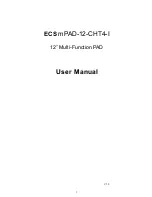
Editing a Normal Voice
MOTIF XF Reference Manual
82
V
oice mode
Song mode
P
a
tter
n mode
Mixing mode
Mast
er mode
Utility mode
F
ile mode
P
erf
or
mance
mode
Sampling
mode 1
Sampling
mode 2
R
e
fe
rence
1
–
4
Break Point 1 – 4
Determines the four Break Points by specifying the note
numbers respectively.
Settings:
C -2 – G8
n
You can also set the Break Point directly from the Keyboard,
by holding down the [SF6] KBD button and pressing the
desired key. See “Basic Operation” on page 37.
n
Break Point 1 to Break Point 4 will be automatically be
arranged in ascending order across the keyboard.
5
–
8
Offset 1 – 4
Determines the offset value to the level at each Break Point.
Settings:
-128 – +0 – +127
Setting example of Amplitude Scaling
The best way to understand Amplitude Scaling is by example.
For the settings shown in the example display below, the basic
Amplitude (volume) value for the selected Element is 80, and
the various Offset values at the selected Break point settings
change that basic value accordingly. The specific changes to
the Amplitude are shown in the diagram below. The Amplitude
changes in a linear fashion between successive Break Points
as shown.
Modulating the Voice—[F5] Elm
LFO (Element LFO)
This display gives you a comprehensive set of controls
over the LFO for each individual Element. The LFO can be
used to create vibrato, wah, tremolo and other special
effects, by applying it to the pitch, filter and amplitude
parameters.
1
Wave
Selects the Wave and determines how the LFO waveform
modulates the sound.
Settings:
saw, triangle, square
2
Key On Reset
Determines whether or not the LFO is reset each time a
note is played.
Settings:
off, on
off
The LFO cycles freely with no key synchronization. Pressing a key
starts the LFO wave at whatever phase the LFO happens to be at that
point.
on
The LFO resets with each note you play and starts a wave at the phase
specified by the Phase parameter (above).
3
Delay
Determines the delay time between the moment you press
note on the keyboard and the moment the LFO comes into
effect. A higher value results in a longer delay time.
Settings:
0 – 127
4
Fade In Time
Determines the amount of time for the LFO effect to fade in
after the Delay time has elapsed. A higher value results in a
slower fade-in. When set to “0,” the LFO effect will not fade
in and reach the maximum level immediately after the
Delay time has elapsed.
Settings:
0 – 127
5
Speed
Determines the speed of the LFO Wave. The higher the
value, the faster the LFO speed.
Settings:
0 – 63
6
P Mod (Pitch Modulation Depth)
Determines the amount (depth) by which the LFO wave
varies (modulates) the pitch of the sound. The higher the
setting, the greater the depth of control.
Settings:
0 – 127
7
F Mod (Filter Modulation Depth)
Determines the amount (depth) by which the LFO wave
varies (modulates) the Filter Cutoff frequency. The higher
the setting, the greater the depth of control.
Settings:
0 – 127
8
A Mod (Amplitude Modulation Depth)
Determines the amount (depth) by which the LFO wave
varies (modulates) the amplitude or volume of the sound.
The higher the setting, the greater the depth of control.
Settings:
0 – 127
1
2
3
4
Break Point
C1
C2
C3
C4
Offset
-4
+10
+17
+4
76
90
97
84
Amplitude
Note
Break
Point 1
C1
Break
Point 2
C2
Break
Point 3
C3
Break
Point 4
C4
1
2
3
4
8
5
6
7










































